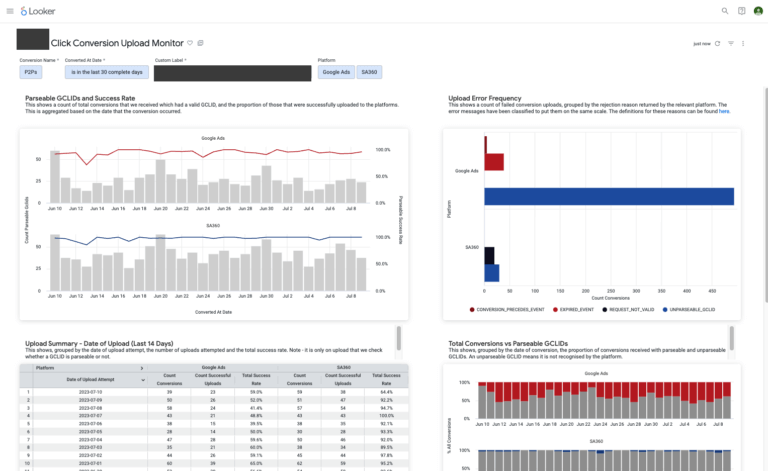What cloud storage sources do you support?
We currently support Google Cloud Storage and Amazon S3 as the source of conversion data or to pass any required logging data to. Should there be a requirement to implement an alternative input method – like Azure or an FTP server – we can also discuss timelines to support with this.
Which marketing destinations do you support?
Event Flow currently supports Google Ads Click Conversions and Search Ads 360 Offline Conversions. There are plans to implement a destination for Meta – so if that’s something you’d like to explore, still reach out to find out about timelines.
How frequently can we upload conversion data?
We can read and upload conversions every hour, multiple times a day, or once a day. There’s no reason why the process can’t be adapted to run more or less frequently, but if you require more frequent uploads than hourly, you may wish to explore other options for server-side tracking (i.e. directly from an application server).
What security/data privacy concerns are there?
Where possible, the process is designed to minimise the requirement to deal with PII and prevent WeDiscover from having to store it. Where it is required – such as for Meta uploads – we have stringent data protection policies in place that meet a high standard of security and conform to GDPR requirements. We have documentation on Privacy & Security here which covers these in detail, but we can also talk through any concerns or requirements that you have in this area on a call.
How much does it cost?
Whether you are an existing client or have never worked with us before, implementing Event Flow will cost the same, at £500/month.
This means that if you already work with us, we can help you implement Event Flow without the need to slow down on any other existing tech or media projects.
And if you don’t already work with us, it means you are able to get set up quickly, with minimal onboarding and without the need to tie yourself into any lengthy contracts or retainers.


